What is the best way to undertake keyword research and explore all written keywords in Japanese?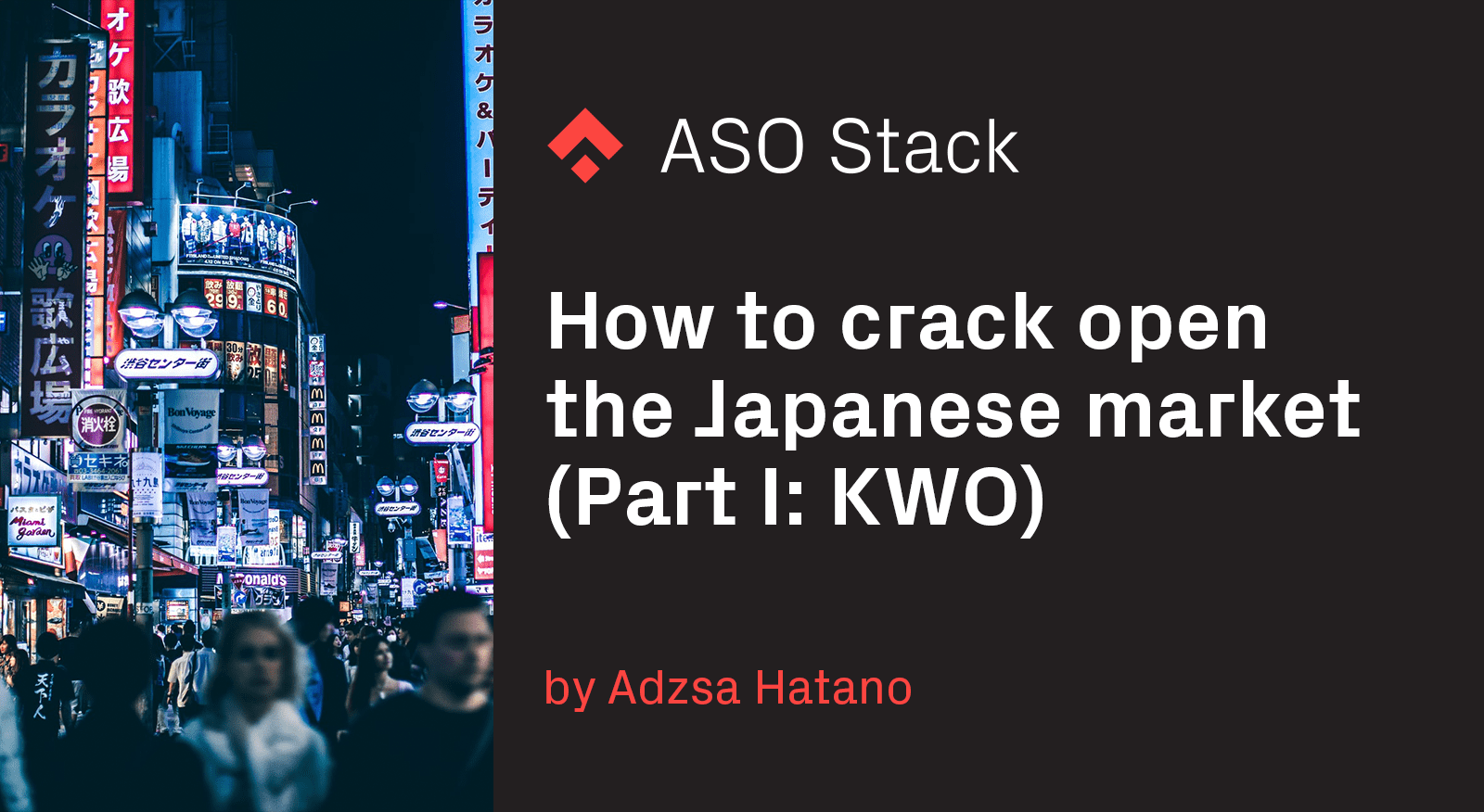
Adzsa Hatano is an ASO Specialist at Phiture and she helps companies to optimize the visibility and conversion of their apps in both the App Store and Play Store through Apple Search Ads, CRO experimentation, and keyword optimization processes.
It is no news for marketers that localization will increase your product’s visibility and conversion. There are a number of inspiring case studies about what has brought successful results, and, in terms of ASO, it often lies down to metadata and creative assets. Beyond language skills in the targeting market, it requires a deep understanding of culture, trends, preferences and more in order to properly localize your assets and see positive results.
ASO Stack Slack Group, where over 2,500 ASO practitioners help each other by sharing knowledge and advice, has 22 public channels (as of 20 April 2020) to discuss related topics in channels such as #appstore, #playstore, #in-app-purchases. Topics related to localization are discussed in the relevant channels, such as how keywords in a language with accents are indexed in the App Store/ Play Store, for instance. But reflecting the increased demand for one market, the ASO Stack Slack moderator launched a channel dedicated to the market a few months back, which is #aso-japan.
While it is true that every country/region has distinctive cultures and traditions, Japan is often named as one of the most unique countries. It might feel like an impossible nut to crack when encountering complexities of language and user behaviors there. But as it is the third biggest market on the App Store, following China and the United States, it would be foolish to miss out on opportunities there.
If anyone is hesitant about starting ASO in Japan, or you’re interested in improving your ASO strategy, I would like to share my learnings from multiple projects that I have been involved in over the last two years. I will publish a series of articles focusing on 1) increasing visibility and 2) increasing conversion.
The Japanese language uses three writing systems.
It is already well known that three types of writing systems are used in Japan, namely Hiragana, Katakana, and Kanji. In most cases, Katakana is used for transcription of foreign-language words into Japanese, and these three characters get mixed together in Japanese sentences. Hiragana and Katakana have 46 characters, respectively and Kanji has X thousands of characters. According to the Ministry of Education, Culture, Sports, Science, and Technology, you are supposed to acquire 2,136 Kanji characters by the end of the nine years of Japanese compulsory education, and you will obtain more Kanji in higher education. The older you get, the more Kanji you can manipulate. In general, an adult would know 3,000–6,000 Kanji characters.
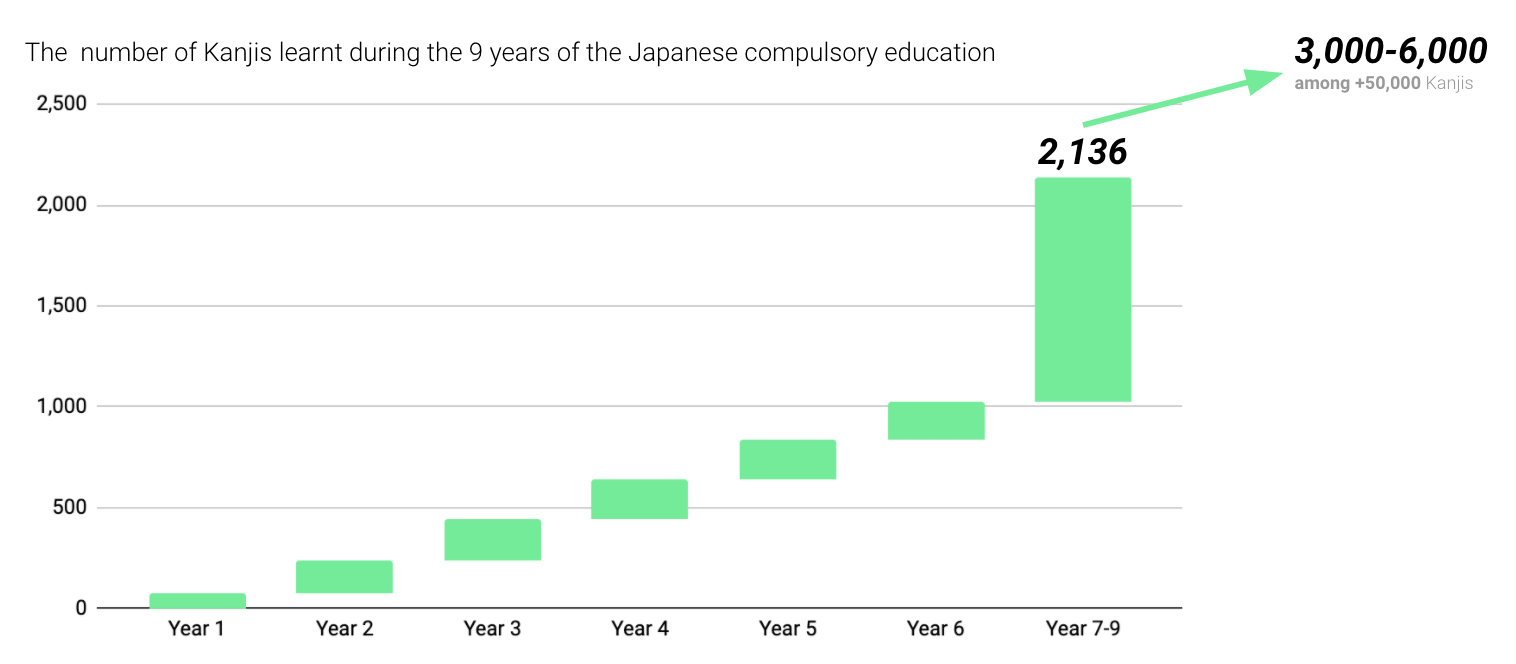
Example:
“It is very sunny today” in i. formal writing and ii. lower educational writing (around 6–7 years old). The pronunciations remain the same between two variants.
- 今日は晴れです。
- きょうははれです。
How can we collect all types of written formats in Japanese language?
I know this might already have put you off starting a localization project in Japanese. However, this actually gives you a lot more opportunities to be able to rank with high volume keywords. In order to ensure you are on the right track for keyword optimization, we can use a step-by-step framework called the Keyword Optimization (KWO) Cycle. It outlines four stages: Research, Propritise, Target and Measure. (For the details of the KWO Cycle, please read ASO Keyword Optimization in Practice: Part 1 and Part 2.)
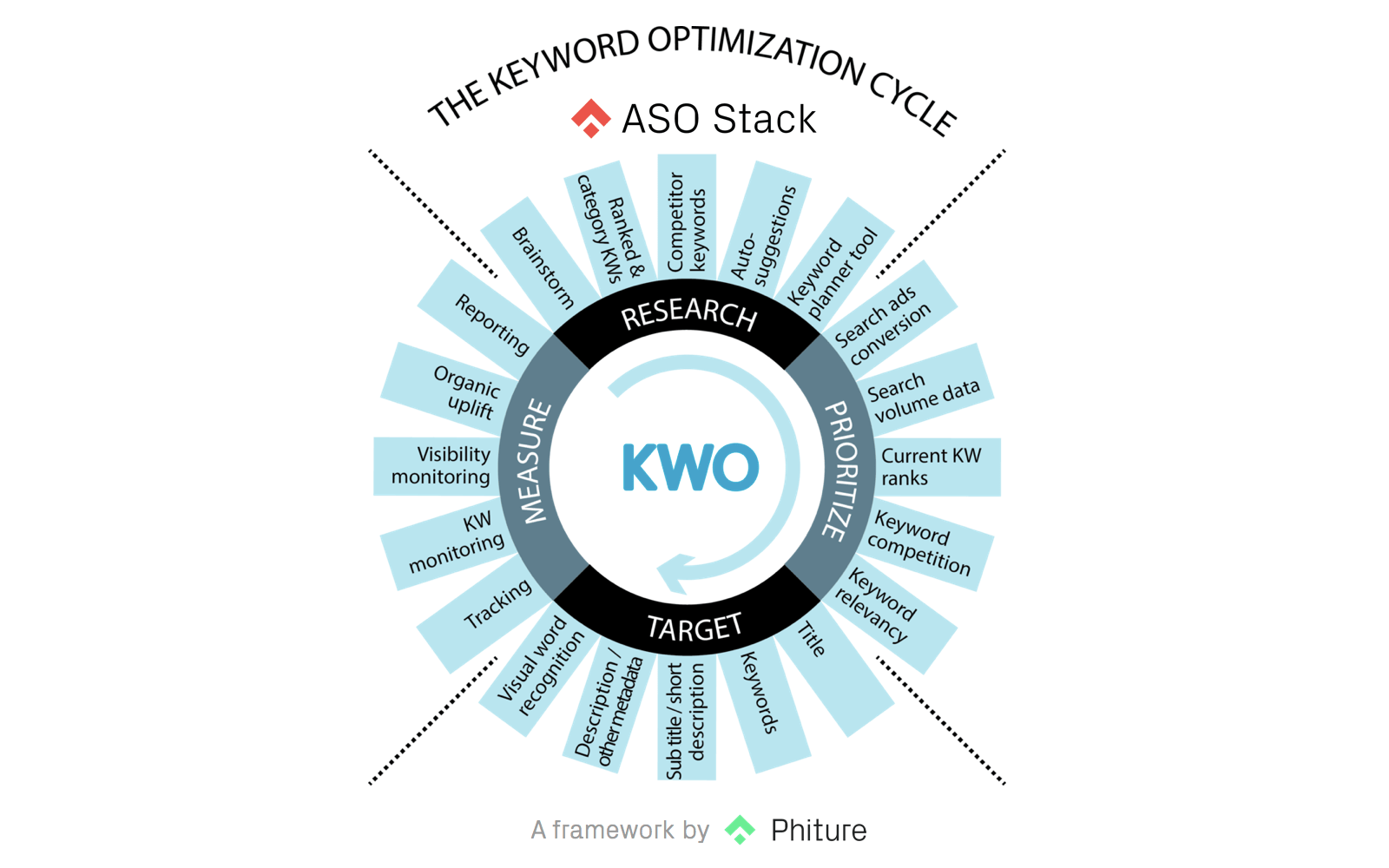
In this article, Research and a small part of Prioritization/ Targeting will be covered in order to help the ASO practitioners who are struggling to find keywords in all three characters as well as using them in their assets.
1.How to do keyword research in Japanese?
If we want to translate languages from one to another, I bet you would use translation tools such as Google Translate. With Google Translate, we would encounter several options with frequency measures. In the case of “photo” in English keywords, we have two words with high frequency. Congratulations, you have already found two versions for one English word!
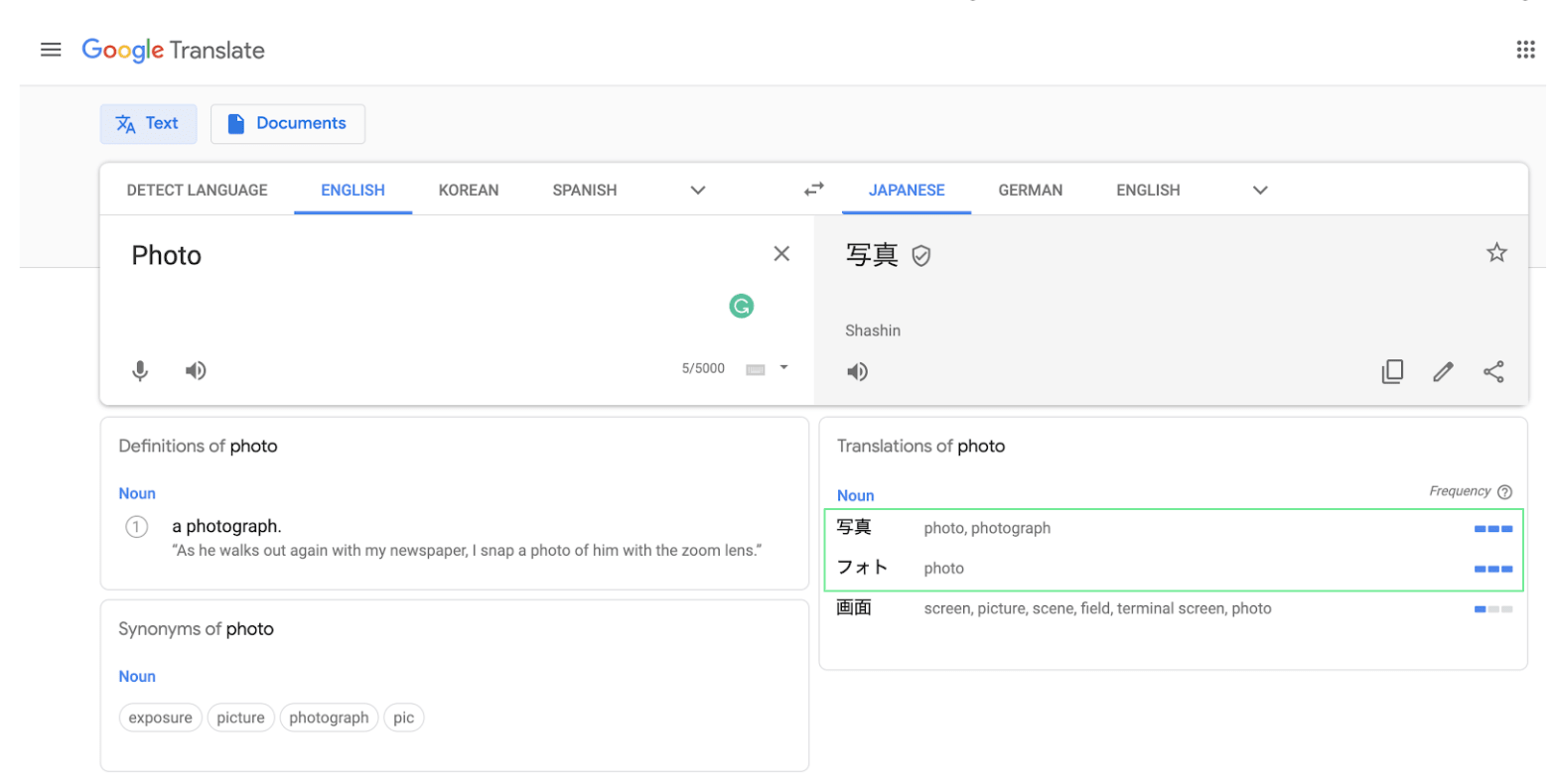
Example: Translate “photo” in the Google Translate
But as a Japanese speaker, I have actually come up with five types of writing formats in my mind. The pronunciation [sha-shi-n] with three variants (Hiragana, Katakana and Kanji) as well as [fo-to] with two variants (Hiragana and Katakana). As you can see below, the term [sha-shi-n] in Kanji is generated from the translation of “photo”, and it can be converted to Hiragana and Katakana, respectively. The terms [fo-to] in Hiragana and Katakana, on the other hand, are directly converted from the “photo”. I will refer to keywords that are shown in the Google Translation as “formal” and keywords that are not as “informal” to make the explanation simpler.
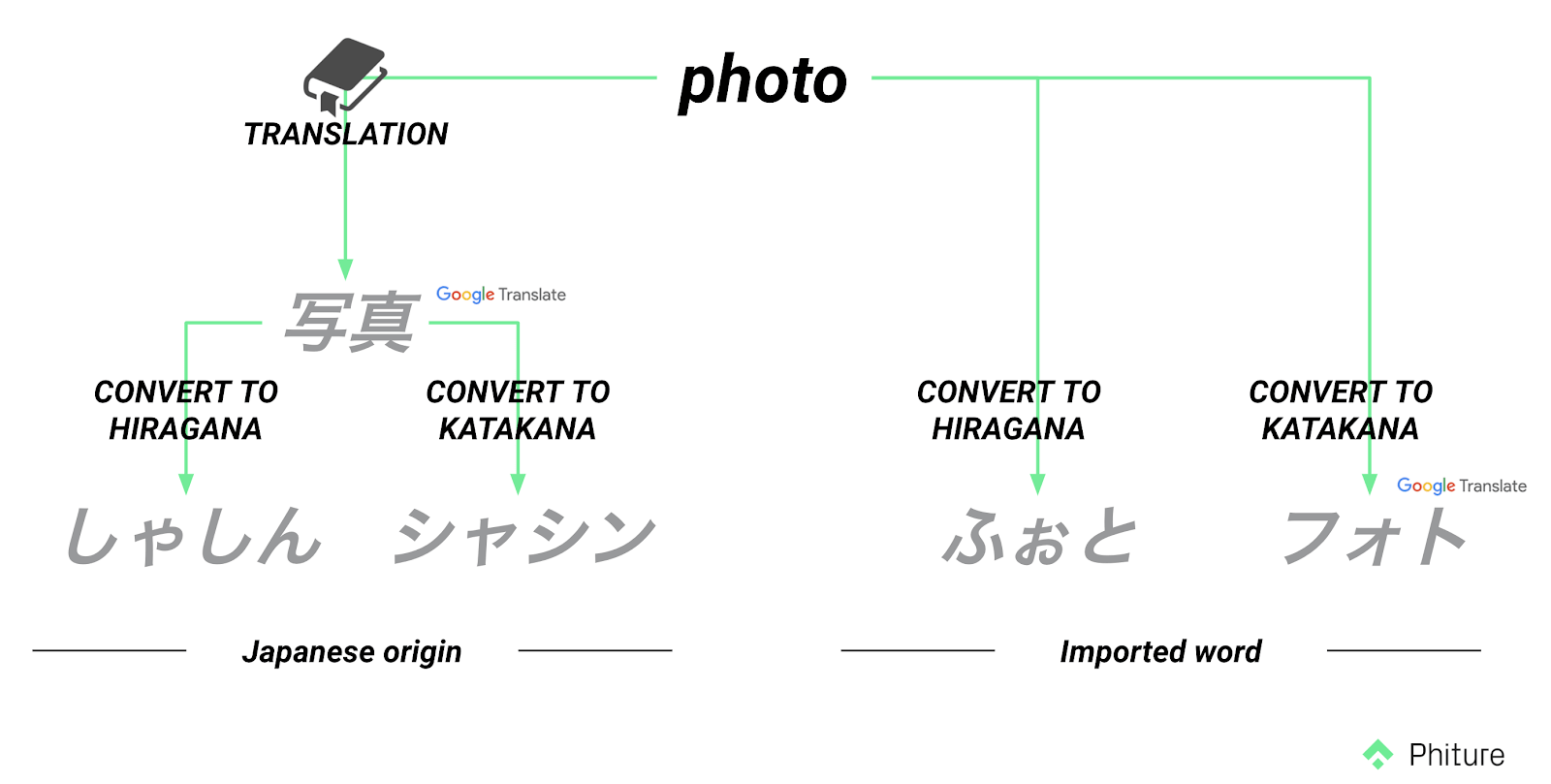
5 types of writing formats in the keyword “photo”.
As a side note, the variations of the writing format vary from keyword to keyword, with there being two to five different equivalents. Here are two examples with “blur” and “pen”.

4 types of writing formats in the keyword “blur” and 2 types in the keyword “pen”.
- Which keywords should be visible?
Let’s assume that you successfully make a list of keywords, and you add these keywords to ASO tools to pull data on volume. Whilst formal keywords (that are shown in Google Translate) have relatively high Search Popularity, the other two informal keywords are also popular keywords. This clearly shows that it is very important to conduct proper keyword research, in order not to miss your core keywords in all written types.

You are wondering why informal keywords “photo” in Hiragana have relatively high Search Popularity. This relates to how users would type keywords in Japanese. There are two Japanese keyboards: Japanese — Romaji and Japanese — Kana.
With the Japanese-Romaji, users type keywords with romanised Japanese language, which are converted into Hiragana, and then users select character types or suggested words/sentences. On the other hand, with the Japanese-Kana, users directly type with Hiragana and then select character types or suggested words/sentences. So we can consider that Hiragana is the typing character, and users are too lazy to convert keywords in Hiragana into formally written keywords. This is why Hiragana written keywords (informal) have relatively high Search Popularity.
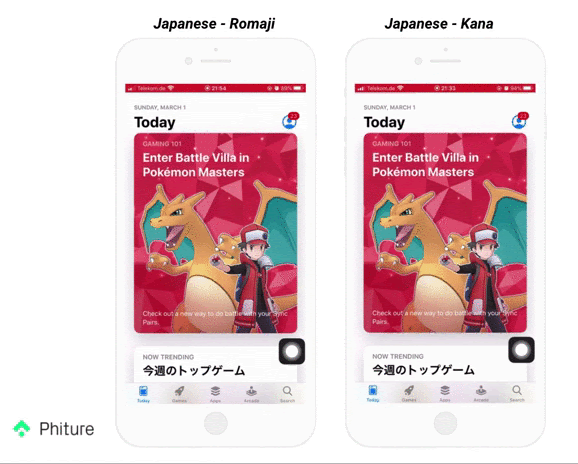
Type “写真加工” (photo editor) in 2 types of Japanese keyboards.
However, you would find it impossible to include all of these keywords in your metadata since the spaces are limited. On the App Store, for instance, your app is only able to have 160 characters in total (title: 30, subtitle:30, keyword set: 100) to be indexed. It is necessary to select certain keywords, based on keywords you would prioritize with considering long-tailed keywords and volume.
If your app is not an app for children, I highly recommend placing keywords that are written formally in the visible assets and informally in the invisible asset, regardless of volume data. In other words, keywords that are relevant and appear in the translation tools would be included in the title and subtitle, whilst keywords that are relevant but do not appear in the translation tools in the keyword set. It is simply because formally written keywords are more common to see in real life, so users would be able to understand words at a glance and find your apps trustworthy.
Ok, so where should I start?
So now you understand how important it is to consider targeting three Japanese characters in your app’s metadata, but you must be wondering where to start.
Unfortunately, we must recognize that tools to simplify these processes are very limited. I would recommend using Hiragana API from goo lab, which allows you to find Hiragana and Katakana written keywords in spreadsheets.
Once you have the ID, you run the script on your spreadsheet, and then you can convert characters with =Hiragana() and =Katakana() functions. Here is an example how I would do with using =GOOGLETRANSLATE() function.
As I mentioned earlier, you will see a few duplications in a keyword (e.g. B6 & C6, and B9, D9 & F9 and C9 & E6), and at the end there are two to five unique keywords. Keywords that should be used in visible assets are keywords generated from =GOOGLETRANSLATE(English keywords) and =KATAKANA(English keyword) functions, which are highlighted with green, but of course, you should better target keywords without the highlight in your invisible assets if it has high volume.
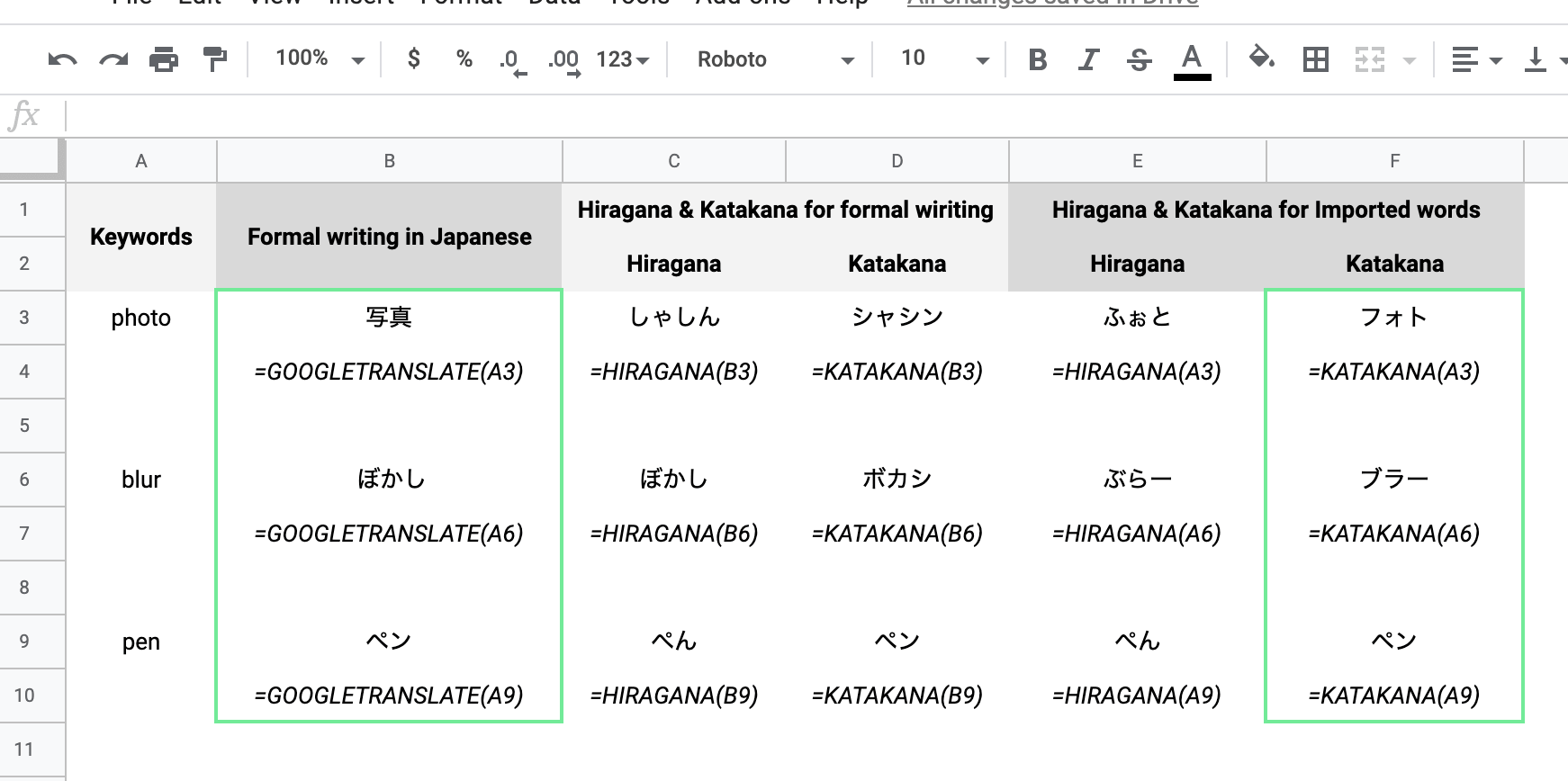
An example of using Hiragana API.
Summary
- The Japanese language uses three characters: Hiragana, Katakana and Kanji, and it is important to explore a keyword in all possible writing characters in order to increase visibility.
- Japanese users often search with Hiragana because it is a typing character. Hiragana written keywords are sometimes formal and informal.
- However, it is always the best to use formally written keywords in visible assets, and informally written keywords in invisible assets, to showcase the quality of your app.
I hope you will find this article useful! Try out these methods to increase your visibility and feel free to join our ASO Stack Slack Community.












